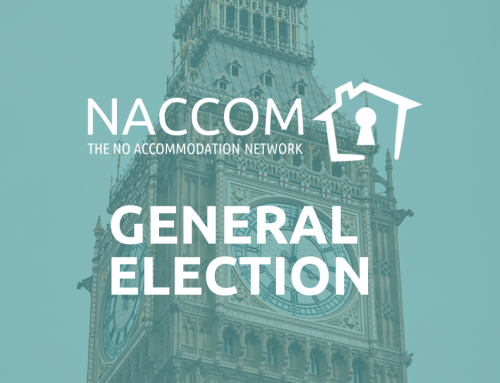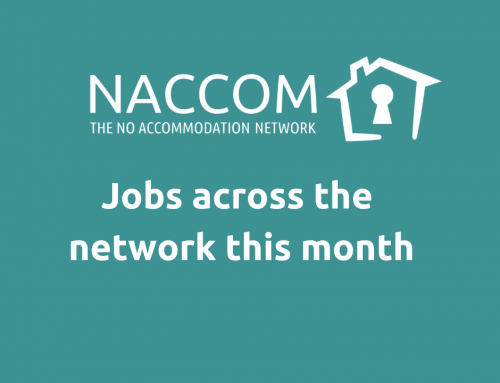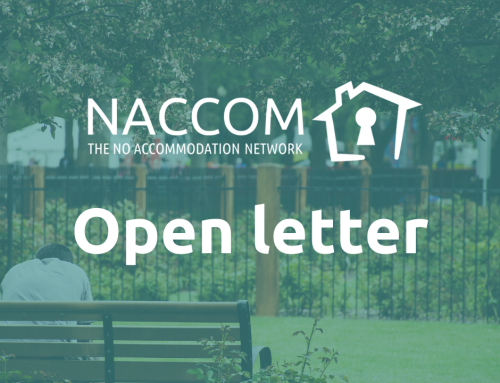This year our Mapping Exercise is being completed in two parts, using an online survey to map information on service provision and changing needs faced by our members and residents that are supported. We’d like to express huge thanks to all our members who have already engaged with the first part, which mapped service activities, costs and income streams across the network, and look forward to sharing the second part shortly.
Part Two of the NACCOM 2017 Mapping Exercise is due out this month (for completion by the end of June), and is to be used as part of our evidence-gathering around both the need for services to support those in destitution, and the benefits that such services can bring, both to individuals and communities.
Regarding Part One, the good news is, if you’ve not completed it yet there is still time! The deadline in April was to enable us to submit a case study as part of the University of Warwick’s research into the costs of destitution and wider implications for society, but we will still be using the data collected for our own planning and development, so it’s not too late to get involved. Members can visit the Forum to access the link or contact us if you have any queries.
The second part will focus more on demand for, and provision of, accommodation across the network, and outcomes achieved. There is an emphasis in this year’s questions on data from the last twelve months (or as recent a twelve month period as you have data available for) rather than on the current snapshot, (although we do also ask for a brief update on the number of people being supported at the current time for comparison purposes).
This year, we have also adapted some of the questions to enable us to capture data more easily around capacity and need across projects. We appreciate that, as with all aspects of the survey, not everyone will be able to give full answers to these questions, but we have asked them because one of NACCOM’s key roles is to map change in order to evidence the need for accommodation and support for those without recourse to public funds. Need, of course, is related to provision but in many cases will exceed the provision that is available, and that is important to know both from an advocacy and capacity perspective.
We have also asked some questions about family support, both amongst those who are already providing housing for this specific group and those who are not. We are mindful that with pending regulations to the Immigration Act, knowing which services are seeing an increase in requests for support by families could be very important in the year ahead and will help us with targeting our activities in the coming months.
Finally, we have included for the first time some questions about the mental and physical health of residents within member projects. We are aware that this will not be information that everyone monitors or can give an indicator for, but for those who are able, it will be a very useful starting point for future advocacy work and helps us to map more effectively the direct experiences of those facing destitution.
Thanks also for the helpful (and generally very positive!) feedback about the online format. As such, the Mapping Exercise (Part 2) will also be available via Google Forms as well as in a Word document (for those who are unable to complete it online). Members will be sent details in the next few days about how to complete the form. Our sincere thanks again to everyone who takes part, and we look forward to sharing the results and discussing the outcomes at the Annual Conference in September.




